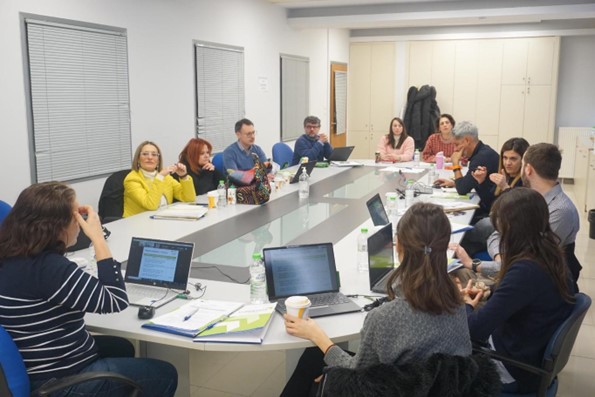As part of the Action Plan proposed by the Universitat Politècnica de València, meetings with experts in construction and demolition issues as well as high level political authorities were suggested in order to increase the knowledge acquired through the project and influence future regulations.
After the good acceptance of a first meeting with international stakeholders from Peru, two more meetings have been organised in order to increase the knowledge generated by the project and to disseminate the results and the tool created.
Two meetings were held on 12 May 2022, one with the College of Architects of Guanajuato and the other with the College of Architects of Southern Jalisco, with the participation of Dr. Jaime Llinares (Professor of the Department of Architectural Constructions) and Dr. Fabiola Colmenero (Researcher incorporated to the UPV for the attraction of international talent) from the Universitat Politècnica de València. During the presentations, the motivation that triggered the creation of the tool developed by the UPV was explained. The different problems detected by the administration, project designers, construction companies and waste managers were introduced. It was explained that the tool makes it possible to refine and clarify responsibilities, through various review phases in which all those involved are responsible for checking and verifying the data provided, and to monitor the waste throughout the project process, from the documentation phase to its reception at the plant.
Objectives:
This type of dissemination allows testing and covering other areas of opportunity and international territories in order to achieve maximum applicability of the work carried out during the project and to solve the diversity of emerging problems that arise from the mismanagement of aggregates and construction waste. It also allows to create conditions for the development of a formal construction aggregates extractive industry with circular economy criteria in order to make the relevant adjustments in a version 2.0 of the tool developed in the CONDEREFF project.
Conclusions:
The session with the Guanajuato College of Architects brought together more than 25 people who were particularly interested in learning more about waste and how public policy operates in European countries.
On behalf of the College of Architects of the South of Jalisco in Mexico, architect José de Jesús Sánchez Cárdenas expressed his concern for the environment and the need to involve architecture professionals in demolition and waste management. Thus, it was commented that, despite all the possibilities that currently exist to minimise waste at the design stage, very few architects apply them, and the Southern Region of Jalisco aims to be, if not the first, to be part of those architects who know how to use them.
After having discussed the main objectives of the project, as well as the tool created to strengthen the capacity to plan and improve C&D waste management policies and practices some conclusions were reached. Firstly, it was stressed that it is important to train construction professionals in order to implement the toolkit, and to be able to highlight the benefits involved. The importance of this type of projects for the development of the value chain and to face the challenges of the construction sector related to the circular economy was also highlighted. Finally, the project was well received by all stakeholders in both sessions, who expressed their interest in attending the congress in November where the final results of the project will be presented.










